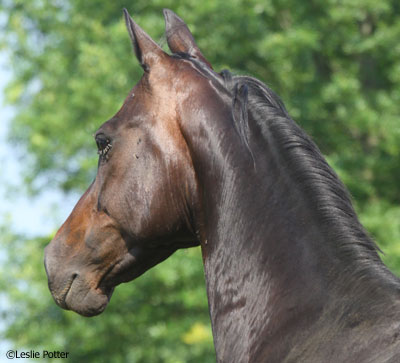
It takes an integrated, multi-step strategy to keep flies under control. By using a combination of methods, you can target flies in the barn, on your property and on your horse. The earlier you implement fly control practices, the smaller of a fly population you will have to deal with later in the season.
Welcome to the No-Fly Zone
Practice good horsekeeping—this is one of the most important things you can do to keep your barn fly-free. Flies breed in moist, organic material, so clean up their preferred breeding grounds to help minimize their numbers.
- Remove manure and soiled bedding regularly from stalls and pens.
- Keep the manure pile away from the barn, and then either compost or spread it. Covering the pile can also help.
- Clean up spilled and leftover feed before it becomes a fly buffet.
- Scrub buckets and troughs regularly.
- Fix leaky faucets and waterers, and address drainage for low-lying and wet areas.
- Mosquitoes breed in stagnant and standing water, so check your property for potential sources. Mosquito dunks can be used to treat standing water in order to keep mosquito larvae from developing into adults. There are different products for this purpose, with different active ingredients. If you plan to use these in water troughs or ponds that critters frequent, look for ones designed for use around humans, livestock, fish and vegetation.
- Mow grass and keep shrubs around the barn trimmed so they don’t become inviting areas for insects to breed in.
Biological Warfare
Consider letting parasitoid wasps (also known as fly parasites) do some of the dirty work for you in an environmentally friendly way. These tiny, non-stinging wasps from the Pteromalidae family are the good guys—beneficial insects that help keep fly populations down. The female wasps lay eggs in the pupae (immature stage) of several common types of manure-breeding flies. The wasp larvae feed on the developing fly that is encased in the pupae, killing the fly before it has a chance to hatch.
For best results start prior to or at the onset of fly season. When the ambient temperature is around 50 degrees Fahrenheit for the daily high, it’s time to order your fly parasites. The sooner you get started, the better your fly control will be. It’s never too late to get on a program, but additional fly parasites may be needed to make up for lost time.
Release sufficient numbers of fly parasites to account for your number of horses and other animals. Replenish as recommended during fly season, typically every three to four weeks. Make sure you release them directly in areas where flies are breeding; for example, urination and manure locations, along fence lines and corners, watering and feeding areas, composting piles, and other areas where there is moist, decomposing material.
If you have close neighboring properties with significant fly populations, the parasitoid wasps on your farm will take care of your flies, but you may need to use traps to take care of migrating flies in order to make your biological fly control program work its best.
Fly parasites primarily live in the ground near their host, developing fly pupae. If you use sprays, be sure not to use them at the same time you release your fly parasites. Once the adult parasites have had sufficient time to burrow into the soil and locate their host fly pupae, you can continue to use fly spray judiciously. Allow about 12 hours between the time your insects are released and the use of fly spray in the vicinity.
Ban Flies from the Barn
Automatic barn misting systems can provide freedom from flies, whether you have four stalls or 40. A motorized pump delivers a fine mist of insecticide at programmed intervals via a spray-nozzle system installed in the barn.
On a smaller scale, refillable battery-operated aerosol dispensers deliver continuous fly control for up to 30 days. You can also hang a solid repellent such as BugPellent, which emits vapors from natural essential oils for pesticide-free fly control.
Promote good airflow in the barn to discourage flies from landing. Well-placed fans can help.
Traps
Traps capture adult flies, luring them with attractants or bait and potentially killing off thousands of flies. There are different types of traps, and some may work better than others depending on the number and types of flies in your area. Proper placement is also key to success.
Use traps to draw flies away from horses and barn areas. Place them away from horses, and between the horses and the source of the flies. You can also place traps to catch flies migrating from one area to another. For example, to intercept flies going from your barn over to your neighbor’s house, put traps along the border between the two properties.
Avoid placing insecticidal baits or traps where children, livestock or other animals might get into them.
Some traps rely on odors or pheromones to lure flies, while others provide a visual attractant. Be careful when mixing and handling attractant-type traps, as the scent can be strong and is not something you want to wear!
Hang sticky fly traps high enough that they are out of the way of horses and humans. It’s also best to hang them away from areas frequented by birds.
From the Inside Out
Feed-through fly control products act as larvicides, passing through the horse’s digestive system and preventing larvae in the manure from developing into adult flies. It’s most effective if all horses on the property are on it.
Most feed-throughs kill flies before they pupate, so if you are using parasitoid wasps, there will be few pupae for wasps to find. The wasps don’t feed on manure, so there’s little chance for them to pick up the feed-through active ingredients.
Supplemental Fly Control
Fly control supplements containing garlic and apple cider vinegar are also popular for a natural approach. When fed regularly, garlic gives the horse’s sweat a slight aroma that seems to deter flies and biting insects. Apple cider vinegar is thought to alter the pH slightly, making the horse a less desirable target for flying insects. Diatomaceous earth is another ingredient often added to discourage flies from breeding in manure.
Spray Away
Fly sprays contain active ingredients that have killing (insecticide) and/or repellent properties. Repellents cause flies to avoid your horse either by scent or touch.
The mix of fly species varies by region and season. Check the label to see if a fly spray addresses the problem pests you are dealing with. Read the label claims to compare fly spray products.
Better Fly Control Through Chemistry
The active ingredients in most fly sprays are derived from pyrethrum, a natural insecticide originating from the chrysanthemum flower family.
Two of the most common are pyrethrins and pyrethroids. Pyrethrins are a mixture of natural compounds extracted from pyrethrum flowers that is biodegradable and relatively low in toxicity. Pyrethroids—including permethrin, cypermethrin and others—are the synthetic versions, designed to be more active against insects and longer-lasting. Many products contain a blend of both types of ingredients.
Other chemicals listed on the label as active ingredients are synergists, which help enhance the effectiveness of the other active components. Some common ones include piperonyl butoxide, which boosts knockdown and kill action; and butoxypolypropylene glycol, which is another repellent.
Going Natural
If you prefer to go the natural route, many fly sprays incorporate essential oils to provide some repellency. Examples of natural ingredients include lavender, eucalyptus, lemongrass, citronella, tea tree, cedar, clove, geraniol (from geraniums), rosemary and thyme.
Formula and Application
Sprays are typically water- or oil-based. Oil-based sprays have staying power and are less prone to washing off, but can attract dirt and be more irritating to skin. For light-skinned horses, oily products may increase the risk of sunburn. The newest generation of long-lasting sprays are water-based, designed with sweat- and water-resistant ingredients.
To get the most from your fly spray application, start with a clean horse. Always follow the product’s label instructions.
Towelettes and roll-ons are handy for the ears and face. Some gel or cream formulations are labeled for use on susceptible areas where gnats like to gnaw on horses, such as under the jaw, in the ears and along the underbelly.
Concentrates that you mix yourself can be economical and earth-friendly, since you’re not using as many plastic bottles. Follow directions to dilute properly, and don’t mix different types.
Spot-on repellent treatments are concentrated and long-lasting. Apply to pastured horses for low-maintenance fly protection.
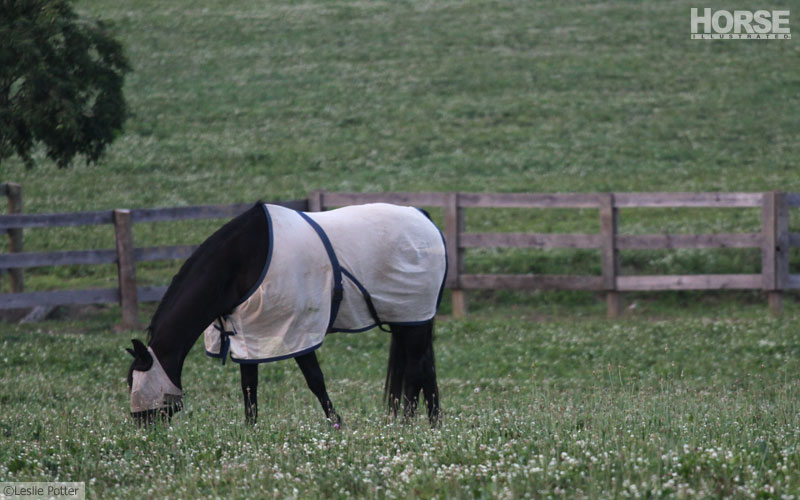
Flywear Fashions
Mesh fly masks, fly sheets and leggings offer head-to-toe coverage to provide a physical barrier. Leg bands, collars and attachable bridle strips containing repellent also provide fly defense.
Under saddle, ear nets and lightweight fly masks designed for riding help keep your horse bug-free. FlyRider sheets and neck coverings from Horseware Ireland even offer full-body coverage.
Keep fly masks clean, and remove them daily to check underneath for irritation or eye problems. A good fit is important. The mask shouldn’t touch the horse’s eye area or create raw spots on his face. Check all flywear regularly to make sure it is staying in place and not causing rubs.
Further Reading
Insect Control Strategies
Field Guide to Flies
This article originally appeared in the July 2013 issue of Horse Illustrated. Click here to subscribe.


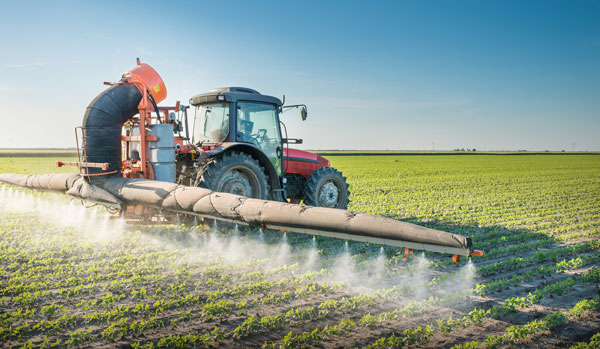
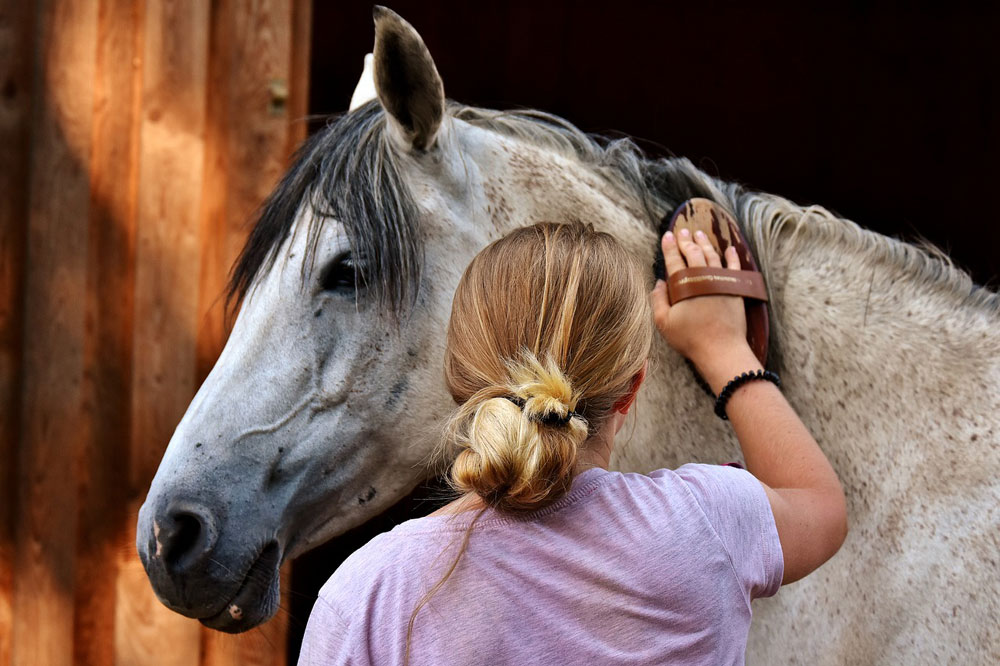
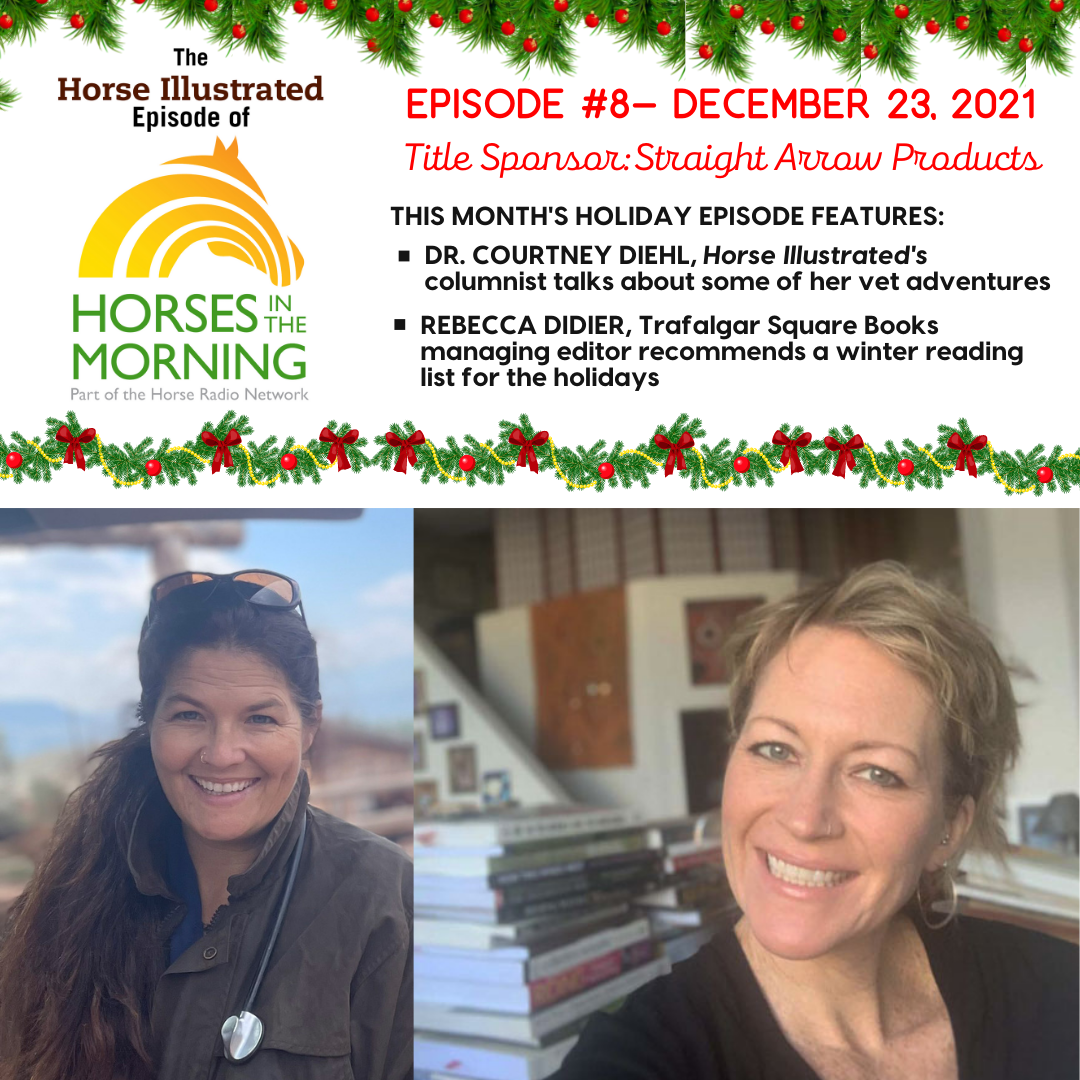

cool
Oh, so many flies this year!
Wish I could get rid of the huge horse flies.
I have discovered vinegar both Apple cider and white do wonders at discouraging flies and mosquitoes.